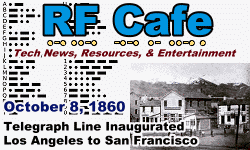|
July 1936 Radio-Craft
 [Table
of Contents] [Table
of Contents]
Wax nostalgic about and learn from the history of early electronics.
See articles from Radio-Craft,
published 1929 - 1953. All copyrights are hereby acknowledged.
|
For many years I have been scanning and posting schematics & parts lists like this one featuring the
Atwater
Kent Model 305Z 5-Tube 32 V. D.C. Superhet radio. It appeared in a 1936 issue of
Radio-Craft magazine. OCR (optical character recognition) software is
run on them to separate the textual content, which allows search engines to
capture words that helps people find information. There are still many people who
restore and service these vintage radios, and often it can be difficult or impossible
to find schematics and/or tuning information. I keep a running list of all
data sheets at the bottom of the page. The thumbnail image of the Atwater Kent
Model 305Z radio was found on the
RadioMuseum.com
website.
Atwater Kent Model 305Z 5-Tube 32 V. D.C. Superhet
Radio Service Data Sheet
 (Has 3 wave bands; dynamic speaker; dual-lighted
dial.) (Has 3 wave bands; dynamic speaker; dual-lighted
dial.)
The voltages for this receiver are shown on the schematic diagram near the portions
of the circuit to which they apply. When aligning the set, the volume control should
be turned on full and the tone control set at high pitch. For trimming the R.F.
end of the set, it is best to connect a 250 mmf. condenser in series with the antenna
lead of the set. When the I.F. is aligned, one of the manufacturer's coupling units
should be connected, the unit being placed on the control-grid cap of the I.F. or
first-detector tube as needed, and the lead from the circuit connected to the coupling
unit. The dial pointer should be at 538 kc. when the rotor of the tuning condenser
is fully meshed. The short-wave range is aligned at 15 mc. and the broadcast range
at 1,500 and 560 kc. There is no trimmer for the police band. Align the I.F. transformers
at 264 kc. |































